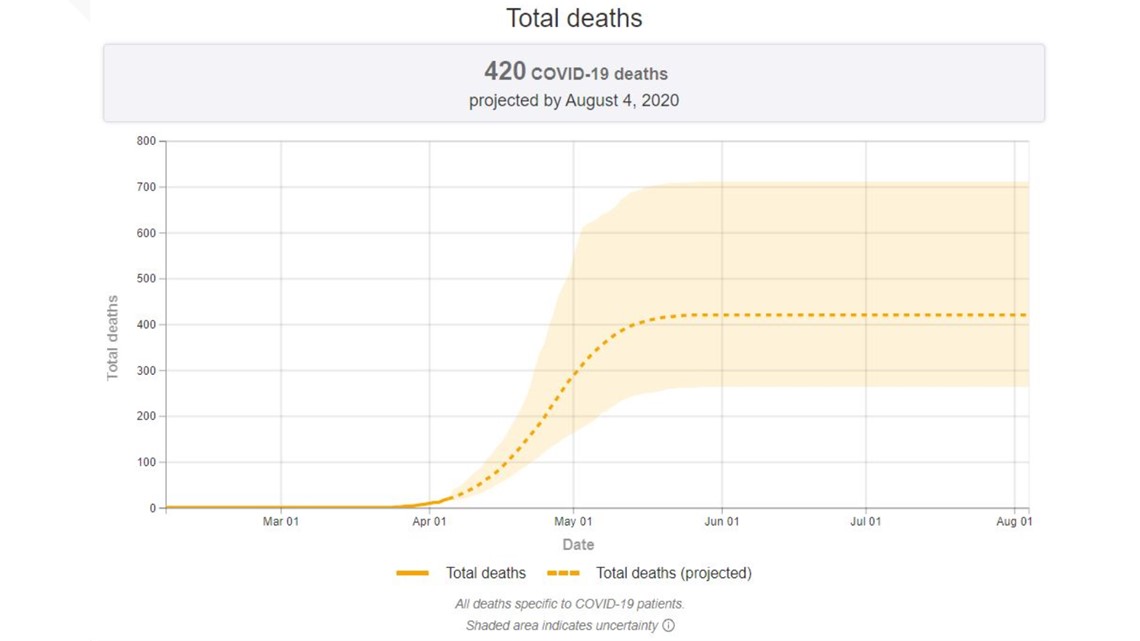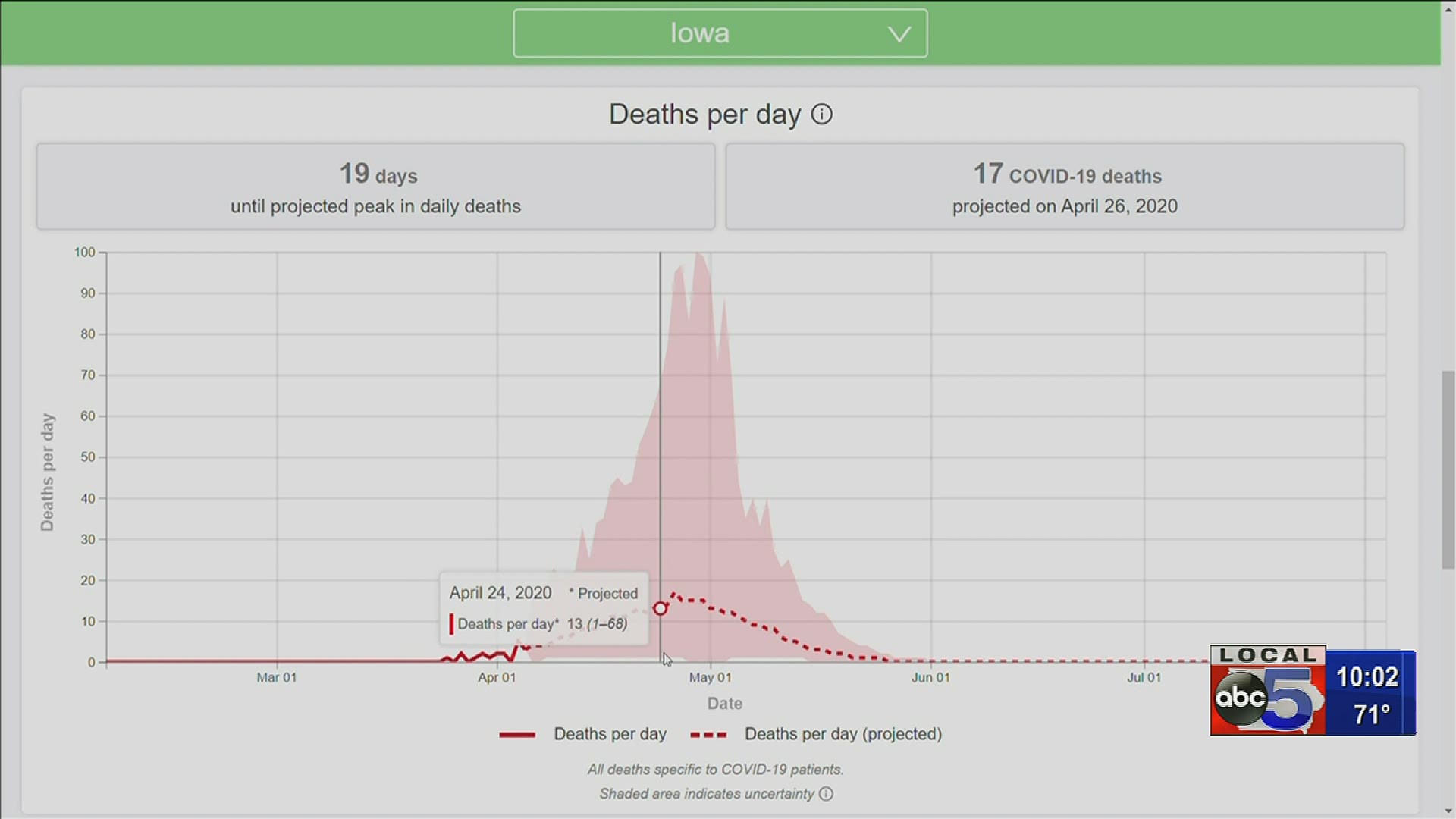DES MOINES, Iowa — State officials estimated Iowa is still two or three weeks away from reaching its coronavirus peak, meaning it's more important than ever to stay home and practice social distancing.
Even with social distancing measures in place through May, a model created by the Institute for Health Metrics and Evaluation predicted 420 Iowans will lose their lives to COVID-19 by Aug. 4.


Iowa is expected to see its worst day on April 26, when there are a projected 17 COVID-19 deaths in a single day.
Five states have peaks forecasted later than Iowa. They include Arkansas, South Dakota, South Carolina, Rhode Island and Wyoming.
While models are important, they really are just forecasts of what could come.
Actions taken by the public could change the outcome.
"When you look at Washington and California, and even New York and New Jersey, they have truly started to flatten their curves," U.S. Surgeon General Jerome Adams said. "The American people have the power to change the trajectory of this epidemic."
How do you change the models?
Experts across the board agree that social distancing will help flatten the curve and lower the death toll.
"Stay at home," Gov. Kim Reynolds said during her COVID-19 briefing Tuesday. "Only leave for essential reasons. Go directly there and back, whether it's groceries, doctor, medicine. Exercise responsibly. If you're sick, stay home and isolate yourself. Practice social distancing. If you have to go out, do not gather in groups of more than 10. If we practice the metrics that we put in place, we will flatten the curve and we will get through this."
Iowa Department of Public Health Deputy Director Sarah Reisetter said Monday, models are important, but it's not something the public should be focusing on.
"While it's important to pay attention to the the the information on those models, what's most important is for Iowans to do is what the governor has asked them to do: Stay home if you can, as much as possible," Reisetter said. "Preventing additional transmission of the virus in our state is the number one thing that we can do to flatten the curve."
Iowa is working to develop projections
Reisetter said the state is close to reaching an agreement with the University of Iowa's College of Public Health to analyze existing models and create our own projections here in the state.
"The first part of that work will involve analyzing existing models that exist, like the University of Washington model that we've talked about previously," Reisetter said. "There are a number of different models out there. We'll first be asking them to analyze that information that currently exists, and then from there, the plan is to transition into more modeling and forecasting for Iowa."
Reisetter said she doesn't know when we can expect to see completed projections out of Iowa.
She said those forecasting models take time to create.

